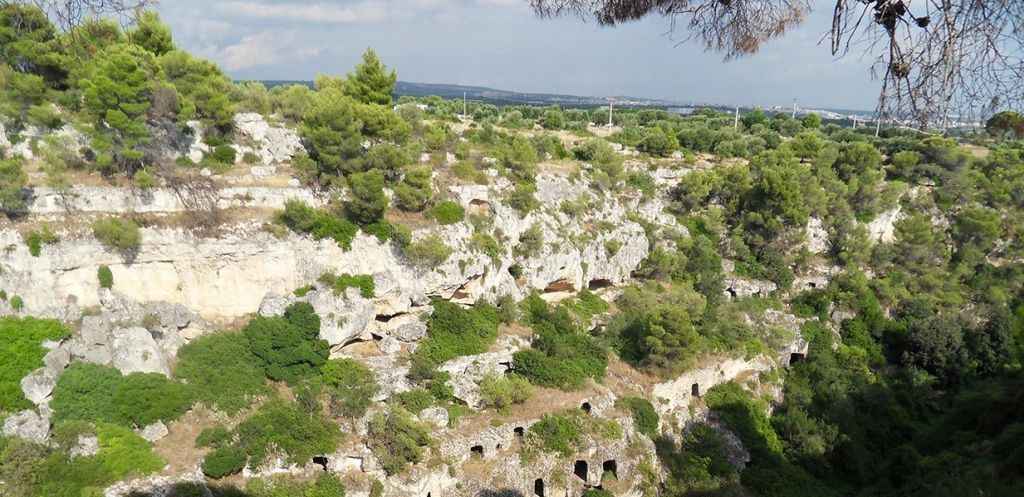




From the top of the summit it looks,
as from a large open balcony,
the blue splendor of the Gulf of Taranto.
The traveler who passes by far,
sees on the hill that rises from the vast plain,
its white and perched houses.
They call it, the spy of Puglia.


Mottola is a pretty town overlooking the Ionian Sea from the top of the edge of the Murgia plateau. In fact, with its 387mt above sea level, from the roundabout of Mottola, the panoramic area, you can embrace the whole Gulf of Taranto with your eyes. In some days, clear and windy you can even see the mountains of Calabria, giving a breathtaking scenery thanks to the sea-mountains combination. Due to its proximity to Taranto, the town has undergone the influence of the capital of Magna Grecia over the centuries and walls dating back to the 4th century BC have been found right in the historic center. The town develops in steps tending circularly towards the historic center with the characteristic historic center also called the medieval village of Schiavonia for the repopulation that occurred during the sixteenth century due to the arrival of Balkan people who fled to the Turks. The Ionian-Tarantino arch has as its geographical and landscape characteristic the ravines, deep incisions that descend from the Murgia towards the sea. The spectacular nature of these real canyons has promoted the formation of the Gravine Regional Park, a territory that opens like a fan with the main pivot of the city of Taranto.
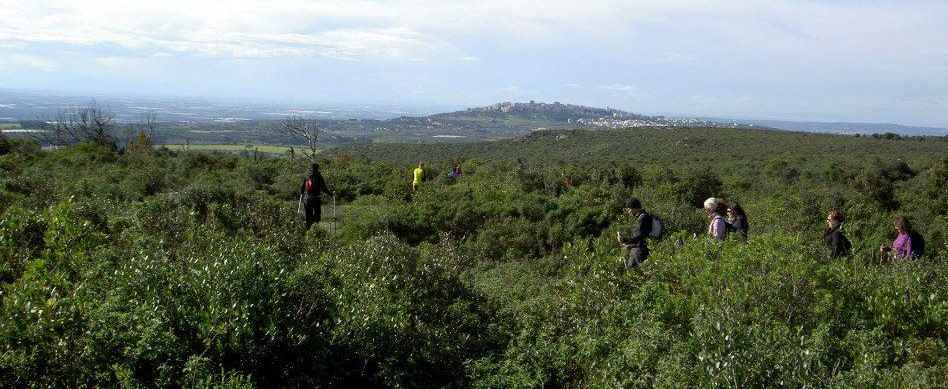
The impact of man on these environments, due to the difficult accessibility, has always been minimal and this has allowed the conservation of a natural environment that has disappeared elsewhere. This oasis effect has also allowed the preservation of rock settlements, in some cases real villages that especially during the Middle Ages flourished along these valleys
Mottola can boast the presence in its territory of countless cave settlements, so much so that it was called in the past with the epithet of "Land of the caves of God".

The rupestrian villages of Petruscio and Casalrotto are a true union of history and nature and are highly suggestive but the rupestrian churches located outside these villages are highly significant and of great interest. The most famous are: the rupestrian church of San Nicola, also called the sistine rupestrian chapel due to the large number of frescoes inside, the rupestrian church of S.Angelo, the rupestrian church of Santa Margherita and the rupestrian church of San Gregorio.
To frame the presence of the many rupestrian churches there are extensive woods that cover almost a third of the municipal area of Mottola.
The Gravines di Petruscio and the Lame di Casalrotto, San Sabino, San Vito, Le Grotte, on the other hand, house the numerous rupestrian churches, among them Santa Margherita and San Nicola, with the latter so rich in icons and frescoes to deserve the definition of "Sistine Chapel of rupestrian civilization".
The ancient rupestrian villages of Casalrotto and Petruscio are preserved intact along the Mottola ravines. Along the ravines walls, caves, primitive dwellings and rupestrian churches are carved into the rock: it is a real window on history, the one found in the territory of Mottola, in the underground villages of Casalrotto and Petruscio, crossed by paths, ladders, with warehouses and artisan plants, wells, cisterns, channels, drains and organic tombs with family tombs.

Used not only for housing purposes, but mainly as places of worship, the villages still preserve churches, sanctuaries and rupestriany crypts, fascinating examples of underground architecture where architectural and decorative elements of hypogean buildings of Greek-Byzantine and Latin tradition are recovered, including some beautifully frescoed.
Not to be missed, in the Casalrotto complex, is the rupestrian-hewn church of San Nicola and the rupestrian sanctuaries of San Cesario, Sant’Apollinare, Sant’Angelo and the Crypt of Santa Margherita.
The focal points of the village of Petruscio are, instead, the three churches, the Poles, the Petruscio, the "Cathedral" and also the "Home of Igumeno", the head of the ecclesiastical community, the Prison and the "Rifugio De Rosa", used in the nineteenth century as a refuge by the homonymous brigand.

The visit of the rupestrian churches of Mottola is a unique and fascinating opportunity to immerse into medieval atmospheres and discover precious treasure cases guarding over a thousand years of art and history.
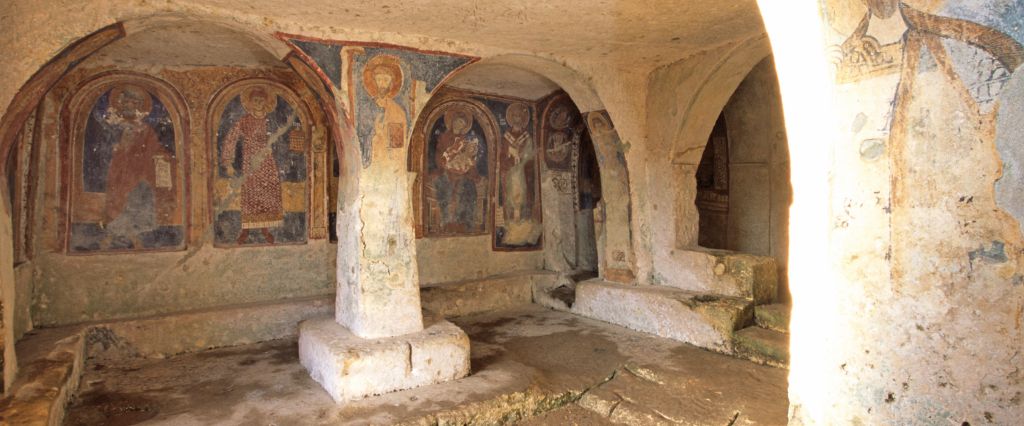
 In the heart of the rupestrian-hewn village of Casalrotto in Mottola, the rupestrian church dedicated to San Nicola was dug into the rock in the ninth century and is located near the ancient consular road, called "via tarantina" in the Middle Ages. The beauty of its frescoes, cleaned up for the first time in 1972 and restored in August 1989, after the vandalic theft of some heads of the masonry icons, was defined the Sistine Chapel of the rupestrian civilization in the South of Italy. In this cave church we really find the most complete and amazing picture gallery
In the heart of the rupestrian-hewn village of Casalrotto in Mottola, the rupestrian church dedicated to San Nicola was dug into the rock in the ninth century and is located near the ancient consular road, called "via tarantina" in the Middle Ages. The beauty of its frescoes, cleaned up for the first time in 1972 and restored in August 1989, after the vandalic theft of some heads of the masonry icons, was defined the Sistine Chapel of the rupestrian civilization in the South of Italy. In this cave church we really find the most complete and amazing picture gallery 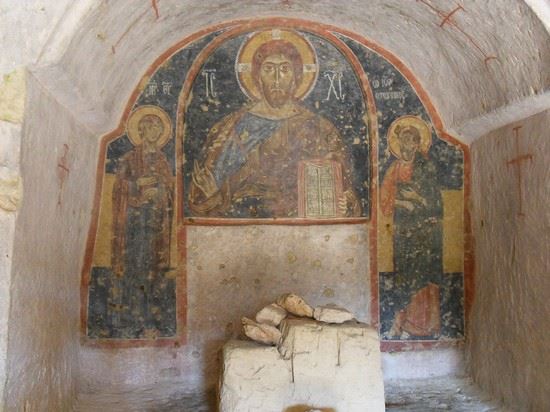 of the popular Apulian sacred art, that manages to fully highlight the testimonies of the various theological and artistic influences of Eastern and Latin brand, during almost four centuries of Middle Ages. The church is located on the edge of the little ravine and can be accessed through stairs carved into the rock and adapted with the recent iron structure prepared by the Superintendency. San Nicola can be defined as a hypogeum sanctuary of the inscribed cruciform type and the archaic structure of the early Middle Ages let us hypothesize comparisons with the Syriac churches of the sixth century, due to the division of the hall into three naves of two bays in the middle of only two massive pillars.
of the popular Apulian sacred art, that manages to fully highlight the testimonies of the various theological and artistic influences of Eastern and Latin brand, during almost four centuries of Middle Ages. The church is located on the edge of the little ravine and can be accessed through stairs carved into the rock and adapted with the recent iron structure prepared by the Superintendency. San Nicola can be defined as a hypogeum sanctuary of the inscribed cruciform type and the archaic structure of the early Middle Ages let us hypothesize comparisons with the Syriac churches of the sixth century, due to the division of the hall into three naves of two bays in the middle of only two massive pillars.
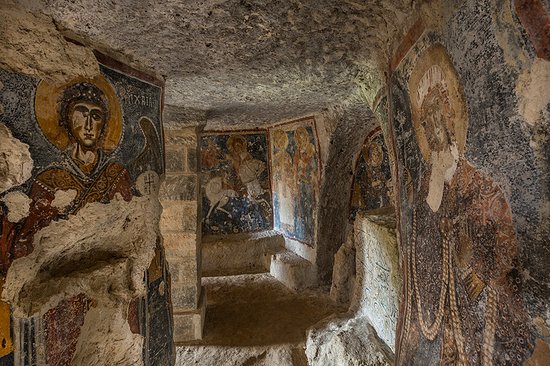 It is a church, with an unusual layout, it is extremely suggestive and represents a real "pearl" of the rupestrian civilization. It is located about a kilometer east of Casalrotto farm and is carved on the left wall of the homonymous slightly incised karst valley
It is a church, with an unusual layout, it is extremely suggestive and represents a real "pearl" of the rupestrian civilization. It is located about a kilometer east of Casalrotto farm and is carved on the left wall of the homonymous slightly incised karst valley
The interior of the crypt is reached after enjoying the view of the wild and bursting natural vegetation of the ravine and after having crossed a narrow walkway overhanging the ravine. A small hypogeum cavern below the entrance is probably a funerary destination.
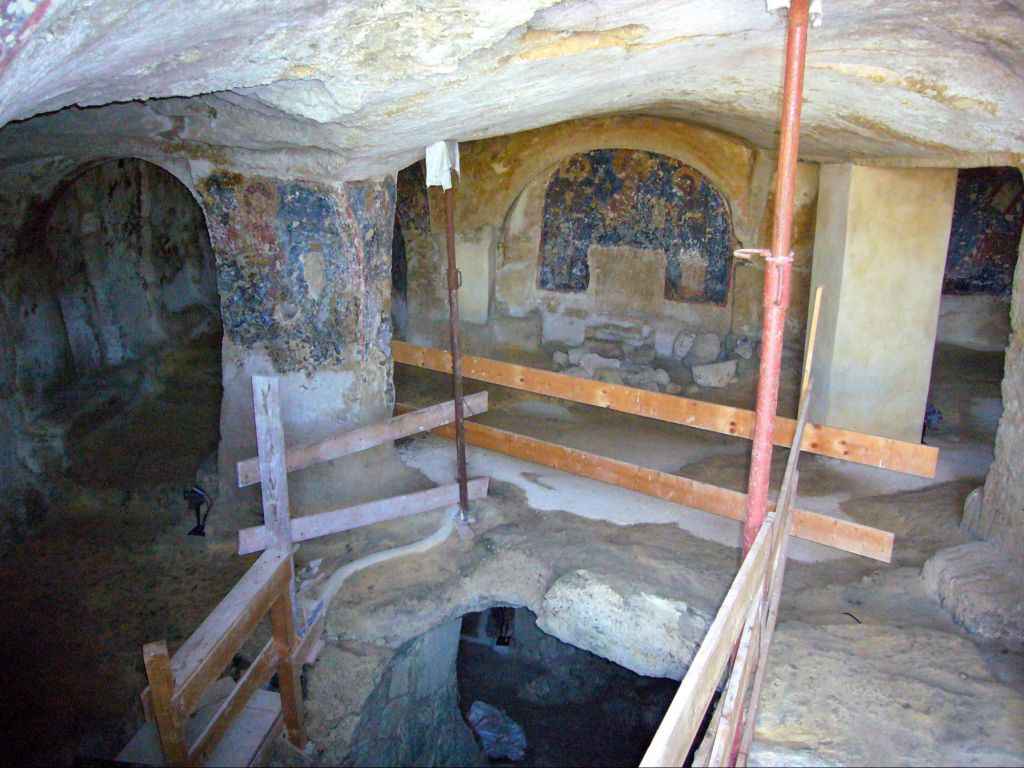
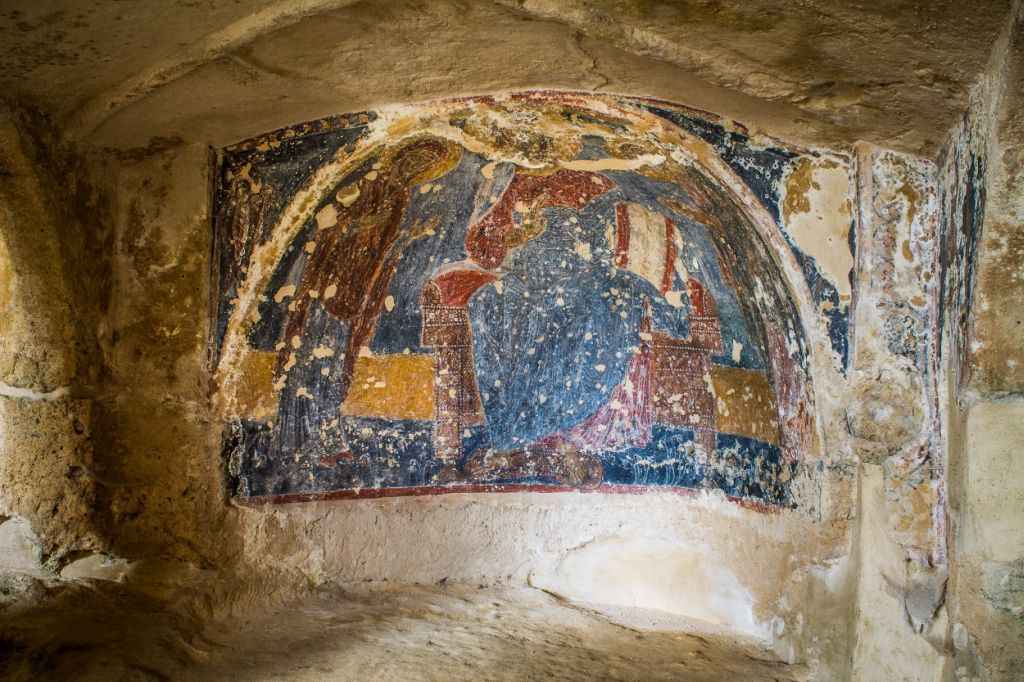 The rupestrian-hewn church of Sant'Angelo, inside the rupestrian-hewn village of Casalrotto "capital of rupestrian civilization", is unique in Italy from the architectural point of view, due to its two hypogeum planes, with the lower used for burial purpose (analogue examples are found in Asia Minor). The church has a roofless pronaos (small atrium) in the area before the entrance and a small cell to the left, probably the custodian's shelter, placed near a cistern to collect water. The church has a double entrance, with the one on the right decorated with a double ring.
The rupestrian-hewn church of Sant'Angelo, inside the rupestrian-hewn village of Casalrotto "capital of rupestrian civilization", is unique in Italy from the architectural point of view, due to its two hypogeum planes, with the lower used for burial purpose (analogue examples are found in Asia Minor). The church has a roofless pronaos (small atrium) in the area before the entrance and a small cell to the left, probably the custodian's shelter, placed near a cistern to collect water. The church has a double entrance, with the one on the right decorated with a double ring.
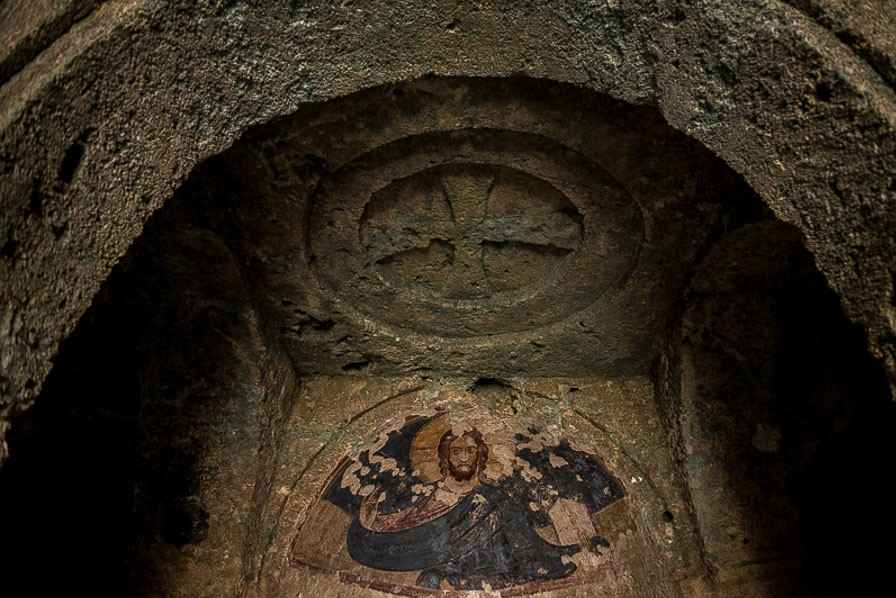 The semi-buried rupestrian church of San Gregorio overlooks a very large grotto complex - including the two near rupestrian churches of the Madonna delle Sette Lampade and the church of the Madonna degli Angeli - and even though less imposing than the scenery of many other rupestrian settlements of Mottola, the interior of the church has architectural and iconographic features of great value and monumentality, thus highly considered among scholars and art historians.
The semi-buried rupestrian church of San Gregorio overlooks a very large grotto complex - including the two near rupestrian churches of the Madonna delle Sette Lampade and the church of the Madonna degli Angeli - and even though less imposing than the scenery of many other rupestrian settlements of Mottola, the interior of the church has architectural and iconographic features of great value and monumentality, thus highly considered among scholars and art historians.
